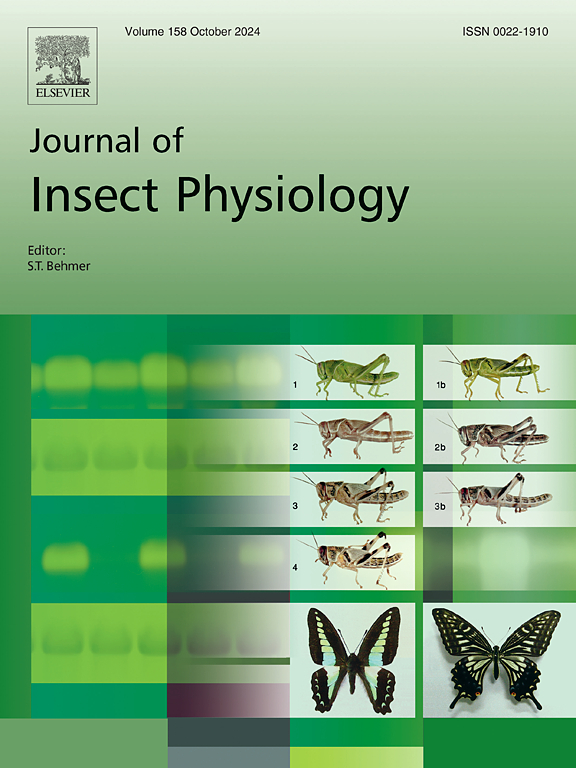Drosophila’s sensory responses to bacterial peptidoglycan integrates positive and negative signals
IF 2.3
2区 农林科学
Q1 ENTOMOLOGY
引用次数: 0
Abstract
Interactions between animals, including humans, and surrounding microbes are governed by a delicate balance, crucial for survival. Animals must distinguish and respond adequately to beneficial and harmful microbes to maintain homeostasis. Recent research suggests that bacterial components such as lipopolysaccharide and peptidoglycan (PGN) influence host behavior by modulating neuronal activity. PGN detection by specific neurons can prompt infected female flies to reduce oviposition or trigger avoidance behaviors via gustatory neurons. Using behavioral assays and calcium imaging, we found that PGNs can also act as attractants, activating the sweet taste circuit in a concentration-dependent manner. Our findings demonstrate that flies integrate PGN-derived positive and negative signals to make ad hoc decisions. This dual response underlines the need for Drosophila to distinguish between different concentrations of compounds in their environment, integrating sensory data to navigate efficiently in microbe-co-inhabited environments.

果蝇对细菌肽聚糖的感觉反应整合了积极和消极的信号。
包括人类在内的动物与周围微生物之间的相互作用是由一种微妙的平衡控制的,这对生存至关重要。动物必须对有益和有害的微生物作出充分的区分和反应,以维持体内平衡。最近的研究表明,细菌成分如脂多糖和肽聚糖(PGN)通过调节神经元活动影响宿主的行为。特异神经元检测到PGN可促使受感染的雌性果蝇减少产卵或通过味觉神经元触发回避行为。通过行为分析和钙成像,我们发现pgn也可以作为引诱剂,以浓度依赖的方式激活甜味回路。我们的研究结果表明,果蝇整合了pgnn衍生的积极和消极信号来做出特别的决定。这种双重反应强调了果蝇需要区分环境中不同浓度的化合物,整合感官数据以有效地在微生物共存的环境中导航。
本文章由计算机程序翻译,如有差异,请以英文原文为准。
求助全文
约1分钟内获得全文
求助全文
来源期刊

Journal of insect physiology
生物-昆虫学
CiteScore
4.50
自引率
4.50%
发文量
77
审稿时长
57 days
期刊介绍:
All aspects of insect physiology are published in this journal which will also accept papers on the physiology of other arthropods, if the referees consider the work to be of general interest. The coverage includes endocrinology (in relation to moulting, reproduction and metabolism), pheromones, neurobiology (cellular, integrative and developmental), physiological pharmacology, nutrition (food selection, digestion and absorption), homeostasis, excretion, reproduction and behaviour. Papers covering functional genomics and molecular approaches to physiological problems will also be included. Communications on structure and applied entomology can be published if the subject matter has an explicit bearing on the physiology of arthropods. Review articles and novel method papers are also welcomed.
 求助内容:
求助内容: 应助结果提醒方式:
应助结果提醒方式:


